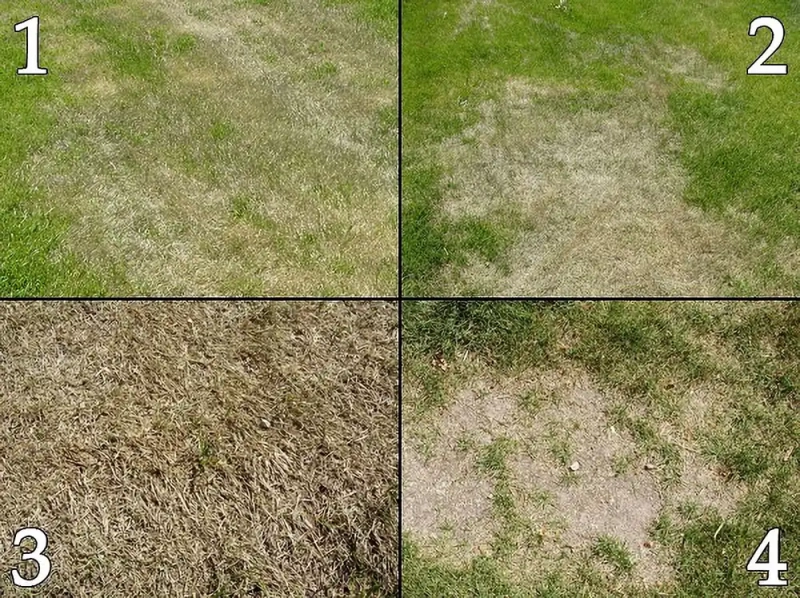The 4 Stages Of Drought In A Lawn
Every lawn is different. Grass age & type, Soil type and condition, thatch levels, mowing height, blade sharpness, watering regime (if any) Shade & angle of the ground to the sun will ALL influence the speed and severity with which lawns show signs of drought.
The above factors will equally influence how fast the grass can recover – or if it might fail to recover.

1. Temporary drought: The grass loses colour and struggles to produce new leaf after mowing.
2. Transition: This is how a lawn may look in a later stage of temporary drought. It hasn't yet passed the point of no return, but large patches may be 'shut down/dormant' and look like straw. This is a common condition on most lawns during most East Anglian summers. Recovery once moisture returns is quick
3. Permanent drought: Appears as a darker straw colour, by this stage grass will not be likely to make a full recovery. Some of the individual plants will have died, eventually if the dead grass is not removed, and new seed introduced it will progress to resemble picture 4. During stage 3 there may be some blackening of the area as the grass folds down and starts to rot. These patches quickly fill with Weeds and Moss.
4. A history of drought: Leaves a patch of bare soil, but there is a little new growth emerging. This bare patch will fill up with weeds / Moss and possibly coarse grass unless new lawn seed is sown.
Drought recovery can be impacted by patches or even large areas of the soil under a lawn becoming hydrophobic. The soil here has become so dry, compacted and warm that it resists the ingress of water. This is called Persistent Dry Patch.
Note: Stage 3 severity is hard to identify. Grass may surprise with its ability to revive but it can take up to 6 weeks from soil rehydration for grass to recover with any vigour. After that hope will be fading fast. The ability of grass to recover depends on many variables, including: Its age, the underlying conditions – how much thatch and compaction it had pre-drought as well as what temperatures were like during the drought. High temperature means more plant stress and a greater likelihood of long-term lawn damage.




